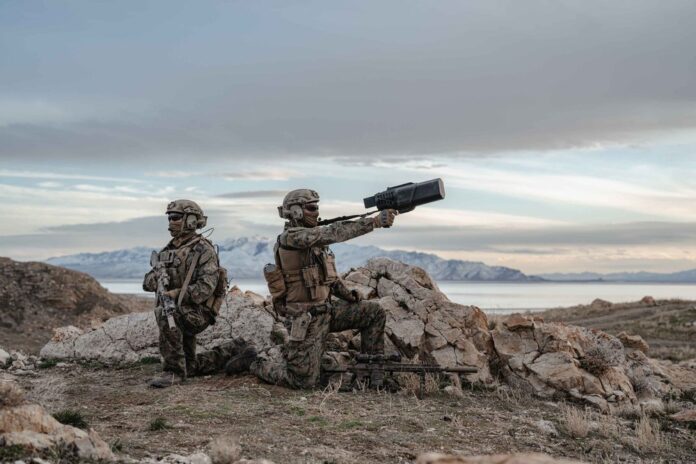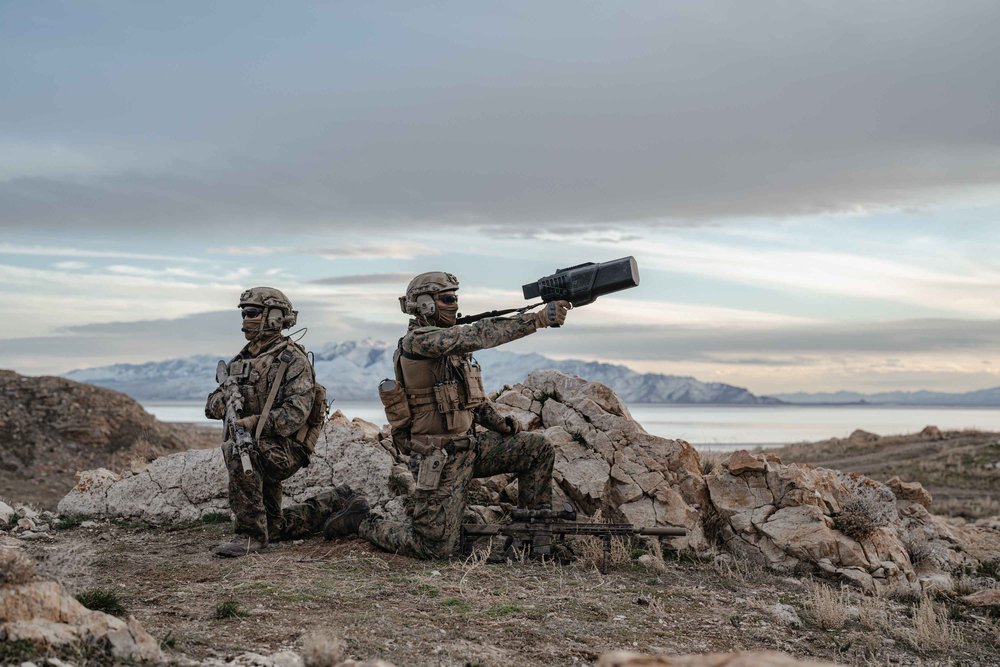 Under Project Land 156, Australia’s military is adopting a diverse range of counter-drone assets, like this DroneShield DroneGun MkIV. (DroneShield)
Under Project Land 156, Australia’s military is adopting a diverse range of counter-drone assets, like this DroneShield DroneGun MkIV. (DroneShield)
Although somewhat belatedly, Australia is now accelerating efforts to induct new counter-unmanned aerial systems (C-UAS) into service. This is occurring under the auspices of Project Land 156.
On 24 July, Canberra announced that A$16.9 million (US$10.9 million) in an initial rolling wave of contracts had been awarded to eleven vendors, for the purpose of rapidly inducting C-UAS systems.
The vendors, five of which are Australian, include: Axon Public Safety Australia, CACI, Droneshield, EPE, HiFraser, Highcom Technology, Key Options, Pioneer Computers Dream Industrial, Precision Technic Defence, Southtech Systems and Steelrock Technologies.
The result is that at least 120 threat detectors and C-UAS technologies will be tested and rapidly introduced into service by the Australian Defence Force (ADF).
Of the A$16.9 million total, DroneShield has already been awarded an A$5 million contract and has supplied its Drone Gun Mark IV and RF Patrol system to the ADF.
Minister for Defence Industry Pat Conroy said, “We have accelerated the acquisition of an appropriate mix of drone capabilities to suit Australia’s environment of military interest and are continuing to examine new autonomous capabilities.”
The Australian government launched Land 156 four months ago, with the first stage being selection of a prime systems integrator to manage the overall C-UAS network. Land 156’s second phase acquiring C-UAS systems is now under way with this announcement, and the third phase will encompass “software as a service”.
Indeed, the Department of Defence promised further counter-drone acquisitions would be revealed “in the coming months”, including a “command-and-control capability and additional advanced counter-drone sensors and effectors”.
Defence added, “Through Project Land 156, the ADF will continually upgrade and refresh capabilities to address emerging drone threats.”
It is understood that Australia has already obtained the Sugar V lightweight passive drone detection system from Ukraine, where it is being used on the frontlines. The 250g, pocket-sized Sugar V was developed by Drone Spices and is produced by Gnidzo, and it has been customised for Australian use with help from Advent Atum.
The Australian government claimed it has committed A$58 million for C-UAS systems over the past three years. Simultaneously, Mission Syracuse under the Advanced Strategic Capabilities Accelerator’s (ASCA) programme is developing capabilities to counter medium-sized UAVs and swarms, and this will present options for Land 156 too.
The government also trumpeted the fact that it is investing in excess of A$10 billion on UAVs over the coming decade, with AMSL Aero, Boresight, Droneshield, Grabba Technologies and Sypaq Systems all benefitting from this investment.
Australia’s current UAV fleet includes the Black Hornet, Puma, Wasp, Skylark and R70 Skyranger. Meanwhile, the Switchblade 300, Integrator and Vector 2-in-1 are currently being introduced into the ADF.
by Gordon Arthur

